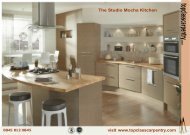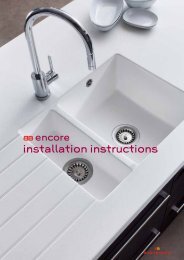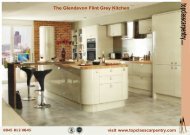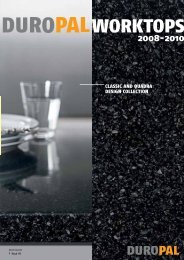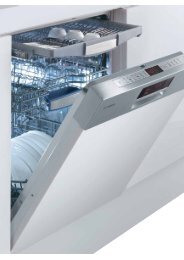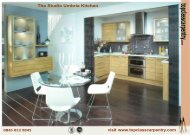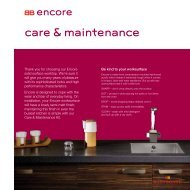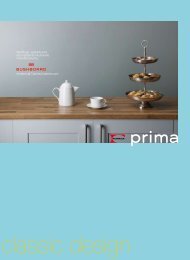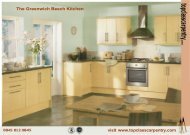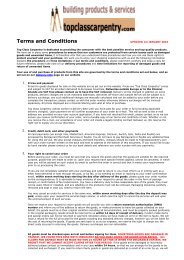Formica postforming laminate guide - Top Class Carpentry
Formica postforming laminate guide - Top Class Carpentry
Formica postforming laminate guide - Top Class Carpentry
You also want an ePaper? Increase the reach of your titles
YUMPU automatically turns print PDFs into web optimized ePapers that Google loves.
Equipment<br />
The usual method of <strong>postforming</strong> is first to glue the <strong>laminate</strong> to the flat area of the<br />
panel or worktop, which has been previously shaped on its edge to the required<br />
profile, then to form and bond the <strong>laminate</strong> simultaneously over the rounded edge.<br />
Glueing processes differ, but there are only two basic methods of <strong>postforming</strong> the<br />
<strong>laminate</strong>: stationary forming and continuous forming. In the first, the workpiece<br />
remains static during the forming operation; in the second, it is carried on a moving<br />
belt through the heating and forming zones of the machine.<br />
Stationary or Static Forming<br />
Static forming machines are simple bending rigs. The panel is pneumatically<br />
clamped to a flat stout bed with the overhanging <strong>laminate</strong> edge projecting. A<br />
retractable radiant heater descends and dwells over the <strong>laminate</strong> until the required<br />
forming temperature is reached. The heater is then retracted and an angled section<br />
folds the heated <strong>laminate</strong> over the edge profile and holds it in position until it is cool.<br />
An advantage of these machines is that they can be used for forming down-bends<br />
with large drop fronts.<br />
A different method of stationary <strong>postforming</strong> is used in the Brandt machines. The<br />
infra-red radiant heater is replaced by a narrow heated platen, which directly<br />
contacts the <strong>laminate</strong> surface and irons it around a prepared profile. Bonding and<br />
forming occur simultaneously. Being in reality a small mobile press, it can use<br />
almost any type of adhesive. These machines are fully automatic: once set to a<br />
particular profile they follow it repeatedly at the touch of a button.<br />
Continuous Forming<br />
Continuous forming machines vary in their size and output capacity, but all operate<br />
in a similar way. The panel, which has had the edges radiused and the <strong>laminate</strong><br />
bonded to the flat area, is carried by a chain or belt-drive through an infra-red<br />
heating zone, and past stainless steel bars which turn the now-softened <strong>laminate</strong><br />
over the profiled edge. Shaped rubber or metal rollers press the formed <strong>laminate</strong><br />
edge in place until the adhesive is cured, and the surplus <strong>laminate</strong> is trimmed off.<br />
Continuous machines fall into two groups using different adhesive systems.<br />
Continuous Process Using PVAc Adhesive<br />
These machines are favoured in the mass production kitchen furniture industry.<br />
They are automated; and they use adhesives which require no special extraction<br />
facilities and present no fire hazard.<br />
The panels or worktops are first veneered in a flat bonding press, with the <strong>laminate</strong><br />
overhanging the profiled edges. The <strong>postforming</strong> machines are self-contained<br />
units: they form, glue and trim in one pass.



